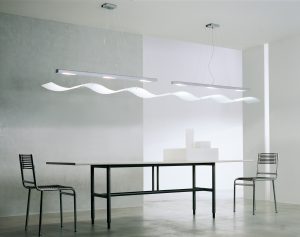Interior design and interior architecture are terms often used interchangeably, yet they represent distinct professions with unique skills, knowledge, and responsibilities. While both fields focus on creating functional and visually appealing interior spaces, the approaches and outcomes of each field are vastly different. Understanding the differences between interior design and interior architecture is essential for homeowners, business owners, and professionals in the construction and design industry who want to ensure that their projects are executed with the right level of expertise and attention to detail. This article will explore the distinctions between interior design and architecture, highlighting their roles, responsibilities, and qualifications.

What is Interior Design?
Interior design is an artful profession that merges function with visual appeal. Through observation, creativity, and analysis, professionals in this field collaborate with clients to craft a unique environment tailored to their needs- residential or commercial spaces such as hotels or hospitals. Skilled interior designers will consider the client’s vision for aesthetics and practicality; from texture selection through overall layout configurations, these experts have been trained extensively on how individuals interact within different types of space up until license certification by professional organizations.
What is Interior Architecture?
Interior architecture is an exciting field that focuses on the design of inviting yet functional and code-compliant spaces. Working with clients to understand their needs, interior architects bring life to interiors through tailor-made solutions such as custom furnishings, fixtures, and lighting elements. From technical building systems like electrical wiring or ventilation ducts – all the way up to creative structural changes – they work collaboratively with a wide range of professionals, from engineers and contractors up to building inspectors, for projects within budget limits but above expectations. Depending upon where you live, a degree in this profession may be required along with certifications/licenses by professional organizations, making it one unique opportunity worth exploring further.
What is the Scope of Work of Interior Design?
The scope of work of an interior designer typically includes a range of tasks that involve creating functional and aesthetically pleasing spaces for clients. Here are some of the common tasks that an interior designer may perform:
Consultation with clients: This involves meeting with clients to understand their requirements, preferences, and budget for the project.
Space planning: This involves creating a functional layout for the space, including furniture placement, lighting, and traffic flow.
Design development: This involves creating design concepts, including color schemes, finishes, materials, and furniture selections.
3D rendering and visualization: This involves using computer software to create realistic 3D images of the proposed design.
Material and finish selection: This involves selecting appropriate materials and finishes for the space, including flooring, wall coverings, and window treatments.
Lighting design: This involves selecting appropriate lighting fixtures and creating a lighting plan to enhance the mood and function of the space.
Furniture selection: This involves selecting and specifying furniture and accessories that will complement the design of the space.
Project management: This involves overseeing the implementation of the design plan, including coordinating with contractors, suppliers, and other professionals involved in the project.
Budgeting and cost estimating: This involves developing a budget for the project and providing cost estimates for the various design elements.
Site visits and inspections: This involves visiting the site regularly to ensure that the design plan is being implemented correctly and to address any issues that may arise.

What are the Key skills required in Interior Design?
Interior design requires combining technical, artistic, and interpersonal skills to create beautiful and functional spaces. Here are some of the key skills required to succeed as an interior designer:
Creativity
Interior designers need to have a strong creative vision to develop unique and innovative design concepts that meet the needs and preferences of their clients.
Attention to detail
Interior design involves great precision and attention to detail to ensure that every space element is functional and aesthetically pleasing.
Technical skills
To create detailed designs and layouts, interior designers must understand technical skills such as drafting, rendering, and space planning software.
Communication skills
Interior designers must effectively communicate their design ideas and concepts to clients, contractors, and other professionals involved in the project.
Time management skills
Interior designers must manage their time effectively to meet project deadlines and ensure that all aspects of the design plan are implemented on schedule.
Problem-solving skills
Interior designers must identify and solve problems that may arise during the design process, such as budget constraints, structural limitations, or unexpected design challenges.
Business acumen
To run a successful design business, interior designers must understand business principles such as budgeting, marketing, and project management.
Knowledge of design trends
Interior designers must stay up-to-date with current design trends and techniques to ensure they are fresh, modern, and relevant.

What is Interior Architecture?
Interior architecture is far more than just designing beautiful spaces. It’s about creating functional and stunning living, working, and leisure areas where people love spending time. This field involves everything from cleverly laid out rooms to carefully chosen finishes and top-of-the-line technical systems.
The interior architecture integrates aesthetics and practicality for a harmonious look and feel. It encompasses many spaces, from homes and offices to hotels and public venues. Interior architects ensure their designs are seamlessly integrated with the overall building design, working hand in hand with architects, engineers, and other experts.
What is the Scope of Work of Interior Architecture?
The scope of work of an interior architect typically includes a range of tasks related to the design, planning, and construction of interior spaces. Here are some of the common tasks that an interior architect may perform:
Spatial planning: It involves creating a functional and efficient layout for interior spaces, including placing walls, doors, and windows and selecting materials and finishes.
Concept development: It involves creating design concepts and strategies that meet clients’ functional and aesthetic requirements.
Construction document: It involves creating detailed drawings and specifications contractors, engineers, and other professionals use to construct the interior spaces.
Coordination with other professionals: It involves working closely with architects, engineers, contractors, and other professionals to ensure the design is integrated seamlessly into the overall building design.
Selection of materials and finishes: It involves selecting appropriate materials and finishes for the interior spaces, including flooring, wall coverings, and lighting fixtures.
Furniture and fixture selection: It involves selecting and specifying furniture, fixtures, and equipment that meet the functional and aesthetic requirements of the design.
Lighting design: It involves selecting appropriate lighting fixtures and creating a lighting plan that enhances the mood and functionality of the space.
Budgeting and cost estimating: It involves developing a budget for the project and providing cost estimates for the various design elements.
Project management: It involves overseeing the implementation of the design plan, including coordinating with contractors, suppliers, and other professionals involved in the project.
Site visits and inspections: It involves visiting the site regularly to ensure that the design plan is being implemented correctly and to address any issues that may arise.
What are the Key Skills Required for Interior Architecture?
Interior architecture is a multidisciplinary field that requires various skills to design and create functional and aesthetically pleasing interior spaces. Here are some of the key skills required for interior architecture:
Design skills
Interior architects must understand design principles and techniques to create effective and aesthetically pleasing spaces. They must be able to develop design concepts that meet clients’ functional and aesthetic requirements.
Technical skills
To create detailed designs and layouts, interior architects must understand technical skills such as drafting, rendering, and space planning software.
Spatial awareness
Interior architects must have a strong sense of spatial awareness to develop efficient and effective layouts that optimize the use of interior space.
Project management skills
Interior architects must be able to manage their time effectively and coordinate with contractors, suppliers, and other professionals involved in the project to ensure that the design plan is implemented on schedule.
Communication skills
Interior architects must be able to communicate effectively with clients, contractors, and other professionals involved in the project to ensure that everyone is on the same page regarding the design plan.
Attention to detail
Interior architects must have strong attention to detail to ensure that every element of the design plan is implemented correctly and on schedule.
Problem-solving skills
Interior architects must be able to identify and solve problems that may arise during the design process, such as budget constraints, structural limitations, or unexpected design challenges.
Business acumen
To run a successful design business, interior architects must understand business principles such as budgeting, marketing, and project management.
Knowledge of building codes and regulations
Interior architects must understand them strongly to ensure their designs comply with local laws and regulations.
A solid understanding of the differences between interior design and interior architecture is invaluable when designing and constructing effective, aesthetically appealing interior spaces. It’s important to pinpoint your skillset to get the best result for your project. Consulting with a professional in either field can provide crucial guidance. Whether you are aiming to revive an existing living space or fulfill a business need, there is a knowledgeable designer or architect available who will know what kind of expertise to apply best and achieve your desired goals. Whether you hire an interior designer or an architect, their skill and passion will bring value to any project. So, for anyone looking for assistance with new builds or renovations, consider design and architecture as great options for achieving success.


